Countless day trips exist from Sevilla, but larger cities like Córdoba, Cádiz & Jerez get all the press. After moving to Spain in 2016, I’ve started to think of Sevilla as a hub… it’s easy to make the grand city your home base, then explore from there. Smaller, equally important destinations like Écija, Itálica & Carmona lie nearby, all less than a couple of hours away by either bus or train. Rafa wanted to show me around Osuna, so off we went…
The only historical reference to Osuna I could recall before going was that it served as a medieval/Renaissance powerhouse—the center of a dukedom awarded to Pedro Téllez-Girón y de la Cueva in 1562 by Felipe II. I’ve done lots of reading after the visit but have yet to understand the reason for creating the Ducado de Osuna in the first place. The Téllez-Girón family had connections via marriage to Portuguese royalty & had already been named Counts of Ureña (or Urueña, near Valladolid) plus possessed other royal titles. They also served the Hapsburg kings through a number of high-ranking appointments. Although the Téllez-Girón family owned a large number of properties throughout Spain, Osuna received important endowments as headquarters of their new dukedom.
More on those sites in a bit, but since royalty attracts royalty one of Osuna’s treats are the grand façades of palaces whose families wanted to be as close as possible to the Téllez-Girón power base. Some now sit in ruins, some are set to be tourist apartments in the near future, & one is already a hotel. Wherever you look in Osuna, there’s no doubt of the town’s past grandeur:
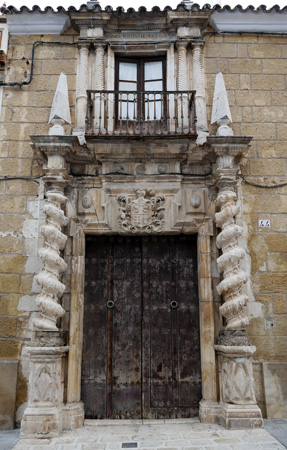
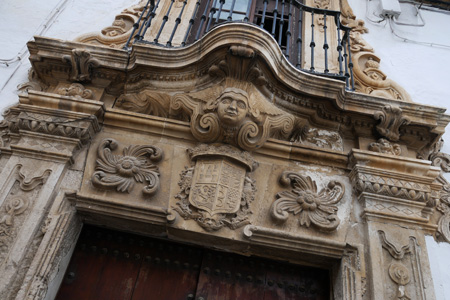
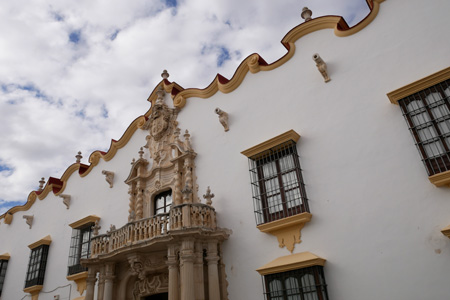
A good place to begin exploring is the top of town, just uphill from Plaza Mayor with an oddly shaped town hall. Take your time… the hike is sometimes steep but manageable, & don’t forget to look behind you for some nicely framed views. This part of town reminds me a lot of Arcos de la Frontera:
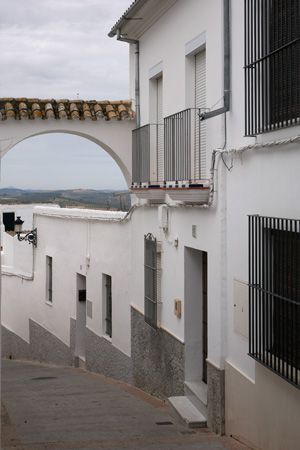
Long after Fernando III conquered Osuna in 1239—nine years before he’d take Sevilla—descendants of the first Duke sponsored the building of a church on the highest part of town. What better way to reuse the grounds of an outdated castle? During construction in 1534, Pope Paul III gave permission to place a colegiata on site. Although not having the status of a cathedral, a colegiata is granted authority to house a chapter (cabildo), responsible for advising bishops & often ruling on secular matters as well. Complete in 1539, the Colegiata has become a textbook example of transitional styles between Gothic & Renaissance. The creation of the Dukedom of Osuna came soon after construction finished, & the Téllez-Girón clan decided to place their family pantheon inside.
No expense was spared on the addition. A small patio with a few preserved frescos leads to the pantheon’s chapel, located directly underneath the main altar of the Colegiata. A mini-choir allowed priests to attend church services & pray for the well-being of deceased dukes via a ceiling grate… they thought of everything! The quality of religious art here is exquisite:
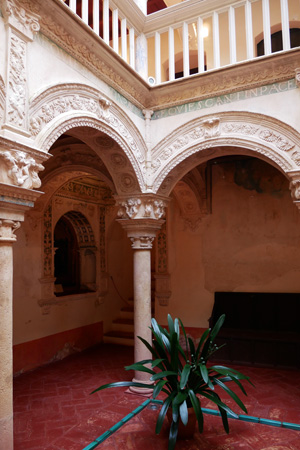
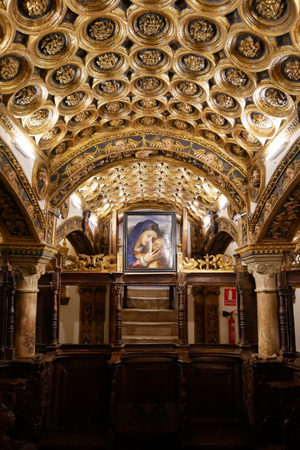

Next comes the dukes themselves —all numbered for easy identification:
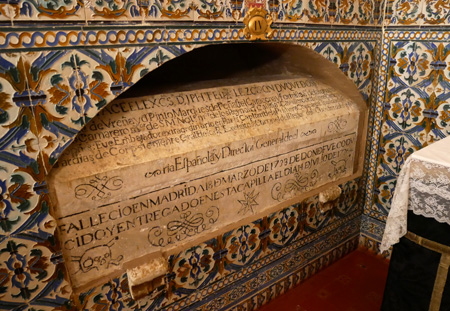
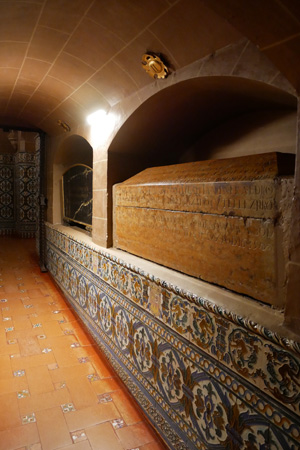
A staircase leads to a spectacular chapel dedicated to the Immaculate Conception. Actual cloth surrounds the chapel altar, competing with the main altar for your attention:
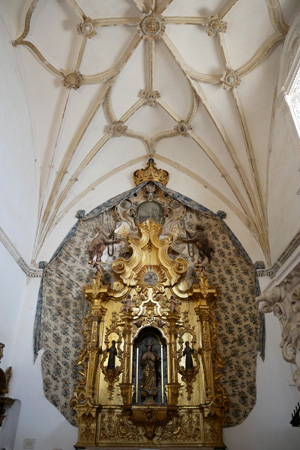
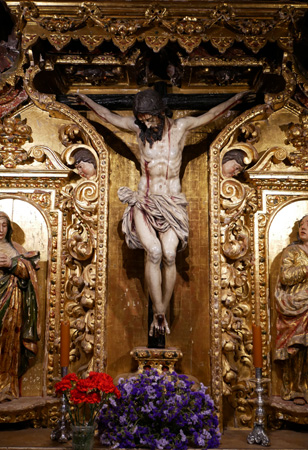
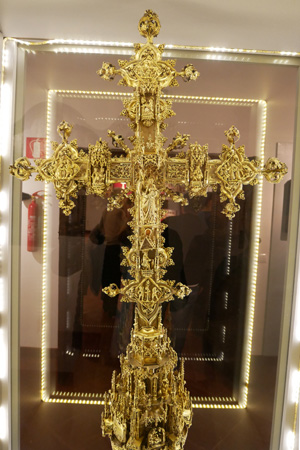
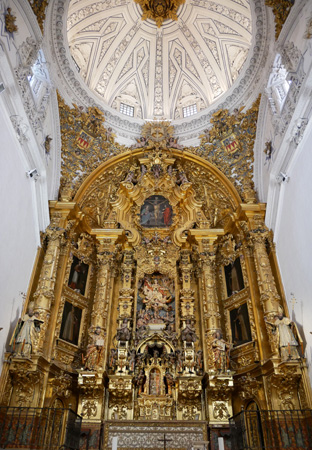
Just across the street sits the castle-like Colegio-Universidad de la Purísima Concepción, also built at the same time as the Colegiata. Even if class is in session, check out the central patio & paintings that show religious & secular aspects of this 500-year old institution:
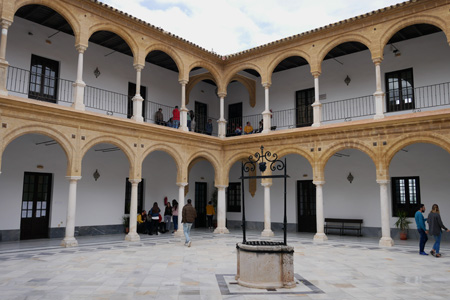
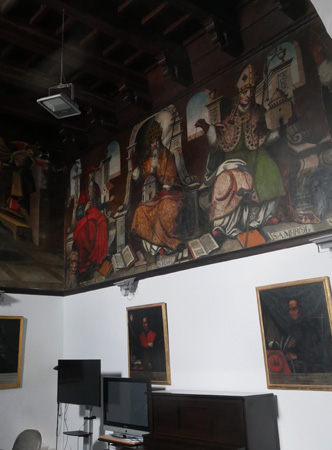
As the Colegiata makes obvious, royalty & the Catholic church have gone hand-in-hand for centuries. No surprise that a number of beautiful church towers dot the Osuna skyline. The Monasterio de la Encarnación has excellent tile work in the cloisters (still functioning with 13 nuns, no photos allowed). Photos below are: the crazy Baroque bell tower of the Iglesia de La Merced, two of the blocky-but-beautiful Iglesia de Santo Domingo & lastly, the seat of the Sevilla cathedral in Osuna with its Giralda decoration above the front door:
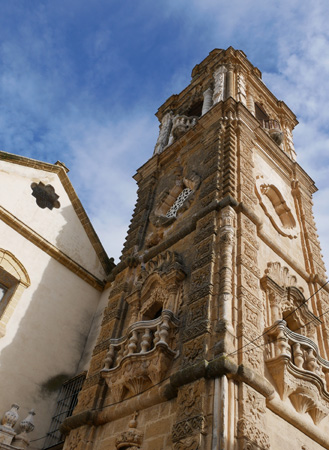
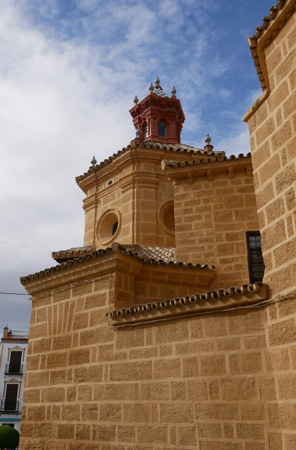


The Pósito Municipal has had a long life with many uses: granary, local government assembly, hospital, retirement home & now serves as a tourist information center:

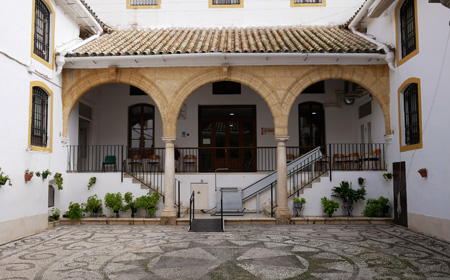
In 1794, the Arco de la Pastora opened up part of the old city wall. Now that the wall is gone, this archway has lost its protagonism. At least no one has demolished it… yet:
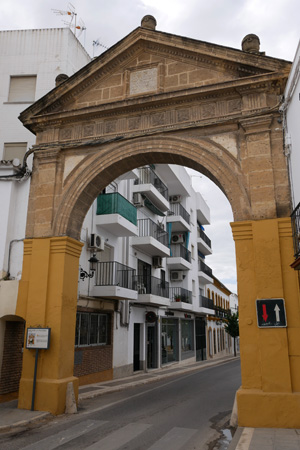
One of the most fascinating finds for me was stumbling upon a Franco-era public housing project. Some long-time readers may remember my obsession with public housing in Buenos Aires, & I’ll likely do a major series for Sevilla at some point in the future. What’s remarkable about these simple but well-maintained houses is that they have the original tile plaques for internal street names, tile street numbers & most of the INV (Instituto Nacional de la Vivienda) symbols intact… one of the nicest decorated housing projects I’ve seen from that time:
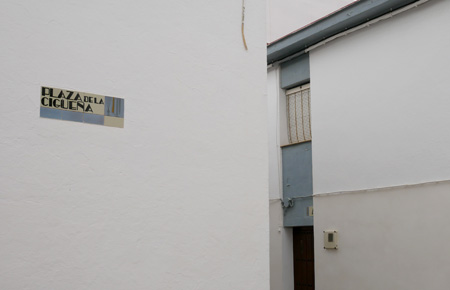
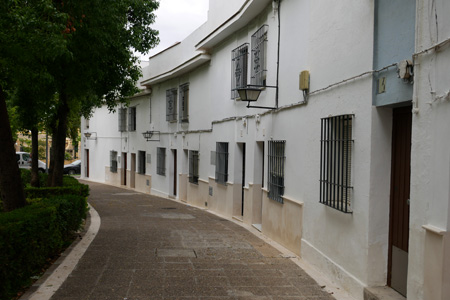
Views from the top of Osuna can’t be beat; be sure to click on the very first photo for a panorama. A quick survey of the countryside gives you an idea of one of the main products: olive oil. Near the train station, the Espuny factory has been churning out the good stuff since 1917:
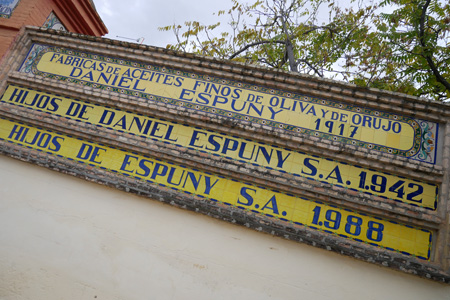
I’m sure there’s more to see, but we did well in the time we had. With a population of almost 18,000 people & only an hour away from Sevilla by train, Osuna should be visited by more people. Lots of history, great food & a charming atmosphere make it a nice break from big-city tourism.

I hope to visit the stomping grounds of very very distant relatives the Téllez-Giron in May of this year.
Hopefully you can arrange a school tour as well! Enjoy your visit… Osuna is an easy train ride from Sevilla. Un saludo!
Gracias